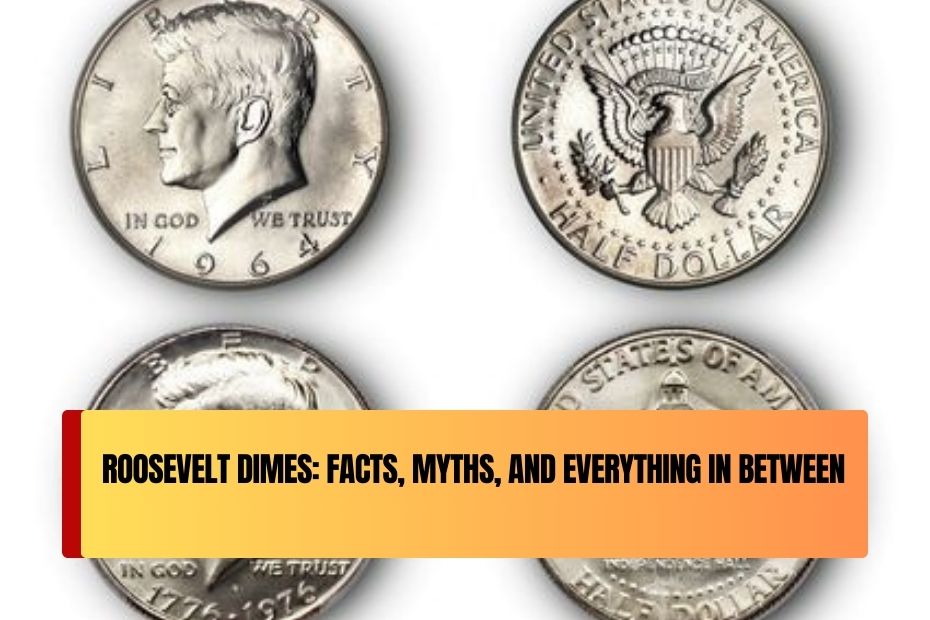The Roosevelt dime is a well-known and beloved coin in the United States. It has been in circulation for more than 75 years and holds special meaning for collectors, history buffs, and everyday Americans alike. While most people are familiar with the Roosevelt dime, there are many interesting facts and myths surrounding it. In this article, we will dive deep into the history, significance, and common misconceptions about the Roosevelt dime, helping you understand why this small coin holds such a big place in American culture.
History of the Roosevelt Dime
The Roosevelt dime was first issued in 1946, just after the death of President Franklin D. Roosevelt, who served as the 32nd president of the United States. Roosevelt was widely admired for his leadership during the Great Depression and World War II. After his passing in 1945, the U.S. government decided to honor him by putting his portrait on the dime.
Before the Roosevelt dime, the U.S. dime featured a depiction of Liberty. However, due to Roosevelt’s lasting impact on American society, the U.S. Mint chose to replace Liberty’s image with that of Roosevelt. This marked a significant change in U.S. coin design, as Roosevelt became the first president to appear on a coin while still alive, although he had already passed away by the time the coin was released.
Design of the Roosevelt Dime
The design of the Roosevelt dime is simple but powerful. The front side (obverse) of the coin features a portrait of President Franklin D. Roosevelt, created by artist John R. Sinnock. The coin’s back side (reverse) displays a torch, an olive branch, and an oak branch. Each of these symbols carries a significant meaning:
- Torch: Represents freedom and liberty.
- Olive branch: A symbol of peace.
- Oak branch: Represents strength and endurance.
The Roosevelt dime’s design has remained almost unchanged since it was introduced in 1946, making it one of the most enduring designs in U.S. coinage.
Common Myths About Roosevelt Dimes
There are several myths and misconceptions surrounding the Roosevelt dime. Let’s explore a few of the most common ones:
- Myth: All Roosevelt dimes are made of silver.
- Fact: While Roosevelt dimes were made of 90% silver from 1946 to 1964, they have been made of copper-nickel since 1965. So, most Roosevelt dimes you encounter today are not silver.
- Myth: The Roosevelt dime is the most valuable U.S. coin.
- Fact: While the Roosevelt dime is valuable to collectors, it is not the most expensive U.S. coin. Coins like the 1933 Double Eagle or the 1913 Liberty Head nickel are worth far more due to their rarity.
- Myth: Dimes with errors are always worth a lot of money.
- Fact: Error dimes can be valuable, but not all are worth large sums. The value of an error dime depends on factors like rarity, demand, and the specific error.
- Myth: Dimes from the 1940s are always rare and valuable.
- Fact: While some 1940s Roosevelt dimes can be rare, many are not. The rarity and value of a coin depend on its mint year, condition, and the overall supply.
Roosevelt Dime and Its Role in U.S. Coinage
The Roosevelt dime is a significant part of U.S. coinage. It is one of the longest-running coins in U.S. history, with millions of dimes minted each year. As the smallest denomination still in circulation today, the dime has remained an important part of American life.
The coin’s simple design and strong symbolism make it an enduring representation of American values. Roosevelt’s leadership, particularly during the tough years of the Great Depression and World War II, continues to be remembered through this small but important coin.
Table: Key Facts About Roosevelt Dimes
| Year Released | Material Used | Mint Marks | Design Details |
|---|---|---|---|
| 1946 – 1964 | 90% Silver | D, S, No Mint Mark | Portrait of Franklin D. Roosevelt, Torch, Olive Branch, Oak Branch |
| 1965 – Present | Copper-Nickel | D, S, No Mint Mark | Same design with copper-nickel material |
| Special Editions | Varies (Proof or Silver) | Various | Special designs for collectors |
| Rare Dimes | Varies (Special Years) | Varies | Coins with minting errors, rare years |
Value of the Roosevelt Dime
The value of the Roosevelt dime largely depends on its year, condition, and any special features it may have. Most Roosevelt dimes in circulation are worth only 10 cents, but older versions or rare editions can be worth more to collectors. Some dimes from the 1940s or certain mint-marked dimes might fetch higher prices due to their rarity.
Proof coins (coins made for collectors) and special edition dimes, such as those made in silver for proof sets, are also valuable. However, the value of these coins can fluctuate based on demand and market trends.
Conclusion
The Roosevelt dime is much more than just a small piece of currency. It is a symbol of leadership, strength, and peace, honoring the legacy of one of America’s most influential presidents. Whether you are a collector, a history enthusiast, or just someone interested in learning about U.S. coins, the Roosevelt dime has a rich and fascinating history worth exploring. While some myths about the coin may circulate, understanding its true value and design can help you appreciate its place in American history and coinage.
FAQ’s
1. Why was the Roosevelt dime created?
The Roosevelt dime was created to honor President Franklin D. Roosevelt after his death in 1945. He was known for his leadership during the Great Depression and World War II.
2. What symbols are on the back of the Roosevelt dime?
The back of the Roosevelt dime features a torch (symbolizing freedom), an olive branch (peace), and an oak branch (strength).
3. Are Roosevelt dimes made of silver?
Roosevelt dimes were made of 90% silver from 1946 to 1964. Since 1965, they have been made from copper-nickel.
4. What makes a Roosevelt dime valuable?
The value of a Roosevelt dime depends on factors like its year, condition, and whether it has any rare features or errors.

